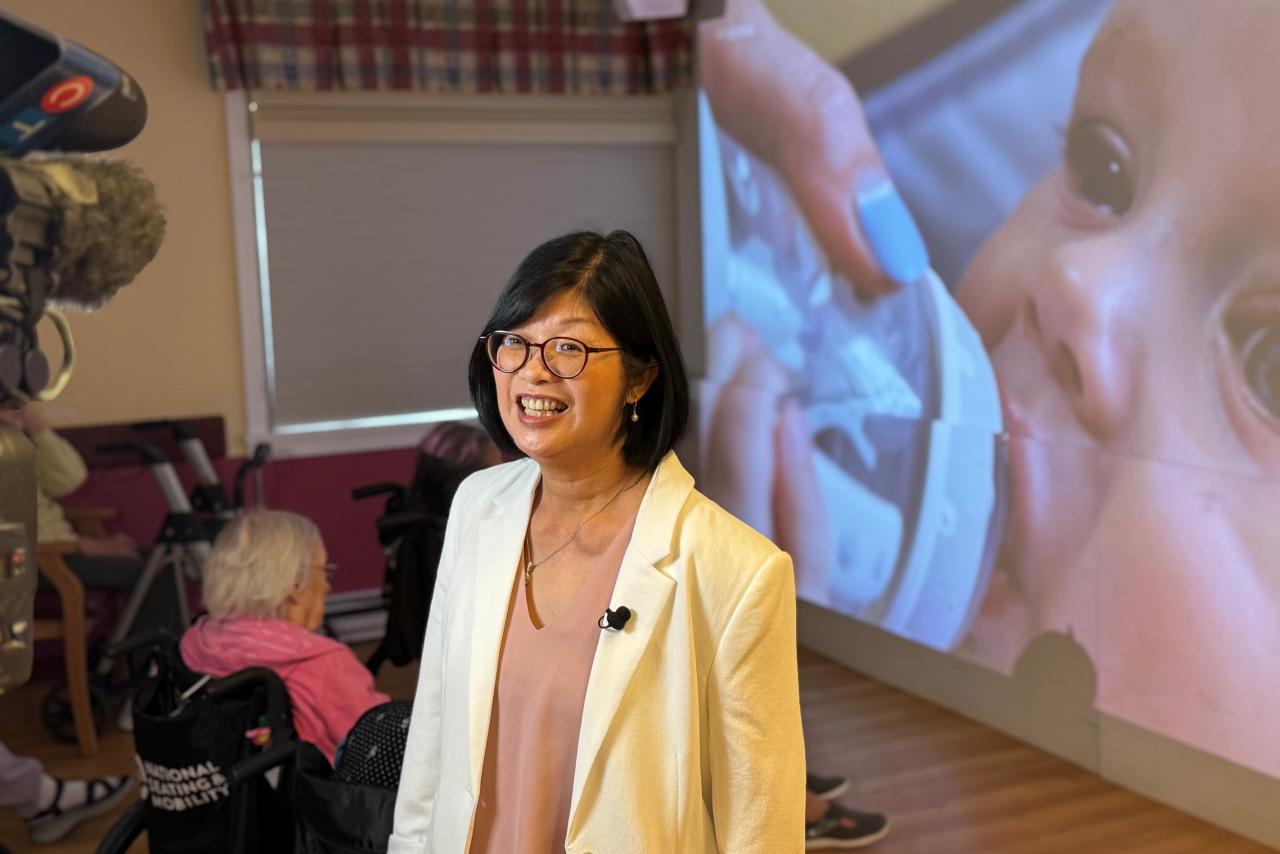Story
New large-scale video project helps adults with dementia

Research project becomes reality for dementia and adult mental health residents.
When the summer heat hit last year, staff in long-term care at Rosewood Manor in Richmond had trouble getting residents with dementia to remember to drink water. They needed an innovative solution and turned to a new TV projector that had recently been installed in the unit.
With a projector fitted into the ceiling, they played a woman drinking water onto the two corner walls of the hallway. The high-quality video and sound provide an immersive experience.
“Residents didn’t necessarily understand the words when people told them to drink water,” says Lillian Hung, a Clinical Nurse Specialist who runs the Vancouver Coastal Health (VCH) Dementia Education Program. “They would push away the glass, but when they saw the person in the video drink a glass of water, they mirrored them.”
The program has been two years in the making and began as a research project at the Vancouver Coastal Health Research Institute with support from its partners. Patient advisors also played a major role in creating and voicing the videos.
“We had residents living with dementia and their families test what was needed and what worked,” says Hung. “They helped create the videos and truly understood what a person with dementia or similar illness would benefit from.”
“The project is very rewarding because it makes a real-world impact,” says Hung. “You can see the residents benefit from it.”
The TVs are now installed permanently at several VCH long-term care facilities, including Rosewood Manor in Richmond, Windermere and Villa Cathay Care home in Vancouver, Inglewood Care Centre in West Vancouver, as well as the Dementia Care Unit and Older Adult program at Vancouver General Hospital.
Staff also found the videos help with other common daily routine actions, such as washing hands as well as eating breakfast.
“Staff report that playing the video of people eating breakfast in the morning helps residents know that it’s morning and breakfast time. It gives them little hints about what time of day it is.”
Staff can also use the projector to display wall-size videos of a fish tank or puppies to help create a soothing and calming atmosphere.
There are also different videos to help engage residents by appealing to a variety of interests. Immersive videos can support residents by creating experiences that stimulate conversation and shared memories, fostering social interaction. For example, a video about antique cars. Staff shared how residents will point and talk about the car’s different parts. Staff make notes on which videos best engage with each patient.
The visual and auditory stimulation supports residents by enhancing cognitive engagement. Videos featuring nature, music, or cultural content, can prompt reminiscence, helping residents connect with each other and staff. When used in group settings, these videos serve as a tool for connection, reducing isolation and fostering a sense of inclusion and well-being.
For those residents with accessibility considerations, there is a portable virtual reality headset for those with limited mobility, and multicultural videos are available in several languages.


